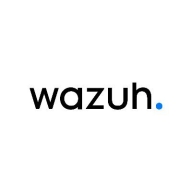

ArcSight Intelligence and Wazuh compete in the cybersecurity category. ArcSight Intelligence has the upper hand due to its comprehensive analytics and detailed threat detection.
Features: ArcSight Intelligence is known for its advanced threat analytics, real-time data processing, and suitability for large enterprises. Wazuh is recognized for its open-source environment, ease of integration, and cost-effectiveness.
Room for Improvement: Users suggest improvements in ArcSight Intelligence's system performance, reduced complexity, and enhanced user interface. Wazuh could improve documentation, add more advanced features, and refine its user interface.
Ease of Deployment and Customer Service: ArcSight Intelligence offers robust support and extensive deployment options but can be cumbersome to set up. Wazuh allows for quicker deployment and has responsive community support, though its resources are less extensive than ArcSight's service teams.
Pricing and ROI: ArcSight Intelligence involves higher setup costs, offering significant returns through detailed insights. Wazuh has a lower initial investment and strong return on investment, appealing to cost-conscious users without compromising essential security features.
The documentation is good and provides clear instructions, though it's targeted at those with technical backgrounds.
There is no dedicated technical support for Wazuh as it is open source.
We use the open-source version of Wazuh, which does not provide paid support.
It can accommodate thousands of endpoints on one instance, and multiple instances can run for different clients.
Scalability depends on the configuration and the infrastructure resources like compute and memory we allocate.
The stability of Wazuh is largely dependent on maintenance.
The stability of Wazuh is strong, with no issues stemming from the solution itself.
The integration modules are insufficiently developed, necessitating the creation of custom integration solutions using tools like Logstash and PubSub.
There is room for improvement by integrating more AI into Wazuh.
An issue I noticed is with tag values in certain rules not functioning properly.
Totaling around two lakh Indian rupees per month.
Since Wazuh is open source, the pricing for support could be applicable to medium-sized companies without much issue.
Wazuh is a SIEM tool that is highly customizable and versatile.
Wazuh's most valuable features include file monitoring and compliance reporting, which do not require excessive costs.
We found the MITRE framework mapping and the agent enrollment service to be the most valuable features of Wazuh.


Empower your threat hunting team to pre-empt elusive attacks with anomaly detection powered by security AI to find insider threats, zero-day attacks, and APTs.
Wazuh is an enterprise-ready platform used for security monitoring. It is a free and open-source platform that is used for threat detection, incident response and compliance, and integrity monitoring. Wazuh is capable of protecting workloads across virtualized, on-premises, containerized, and cloud-based environments.
It consists of an endpoint security agent and a management server. Additionally, Wazuh is fully integrated with the Elastic Stack, allowing users the ability to navigate through security alerts via a data visualization tool.
Wazuh Capabilities
Some of Wazuh’s most notable capabilities include:
Wazuh Benefits
Some of the most valued benefits of Wazuh include:
Wazuh Offers
Reviews From Real Users
"It's very easy to integrate Wazuh with other environments, cloud applications, and on-prem applications. So, the advantage is that it's easy to implement and integrate with other solutions." - Robert C., IT Security Consultant at Microlan Kenya Limited
“The MITRE ATT&CK correlation is most valuable.” - Chief Information Security Officer at a financial services firm
We monitor all Security Information and Event Management (SIEM) reviews to prevent fraudulent reviews and keep review quality high. We do not post reviews by company employees or direct competitors. We validate each review for authenticity via cross-reference with LinkedIn, and personal follow-up with the reviewer when necessary.